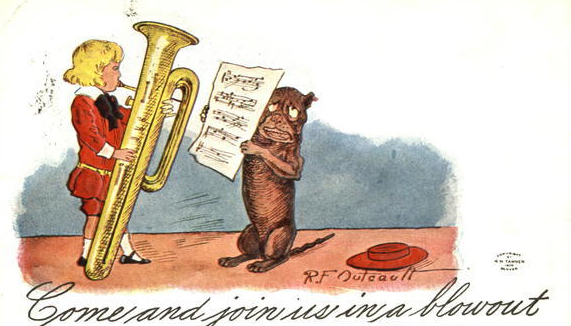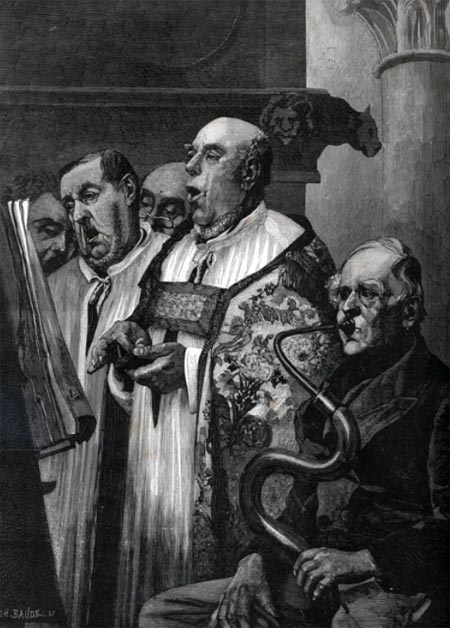I’ve added 6 new serpent and ophicleide images to the post Serpent & Ophicleide: History and Images, bringing the total images in that post to more than 100. Here are the new pictures, along with their captions:
1673—Rome, Italy: Athanasius Kircher includes a print and description of the serpent in his treatise, Phonurgia nova (see below image; public domain) (source: European Cultural Heritage Online).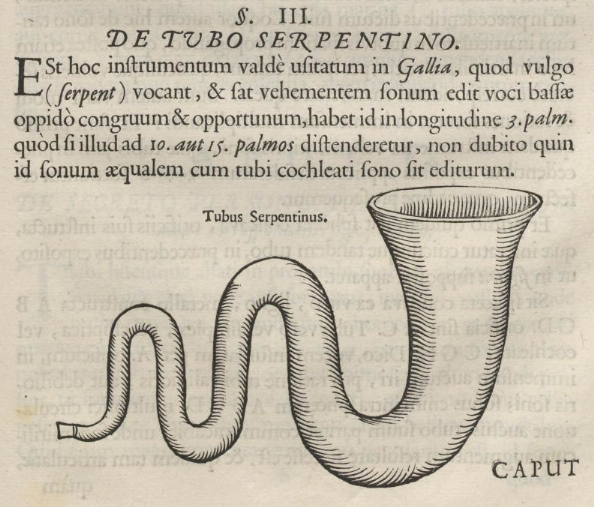
1844—France: An illustration by J. J. Grandville in Un autre Monde depicts an ophicleide gone awry, as described by Grandville: “An accident marked the end of the concert. During the fireworks in D, where the fugue ended smorzando in a sweet and dreamy melody, an ophicleide, overloaded with harmony, suddenly exploded like a bomb, launching the blacks, the whites, the grupetti of sharps, eight- and sixteenth notes; the clouds of musical smoke and the flames of melody were dispersed into the air. Many dilettantes had their ears blown out, while others were injured by the shrapnel of the F and G clefs. Measures have been take to ensure that such an accident does not happen again” (see below image; public domain).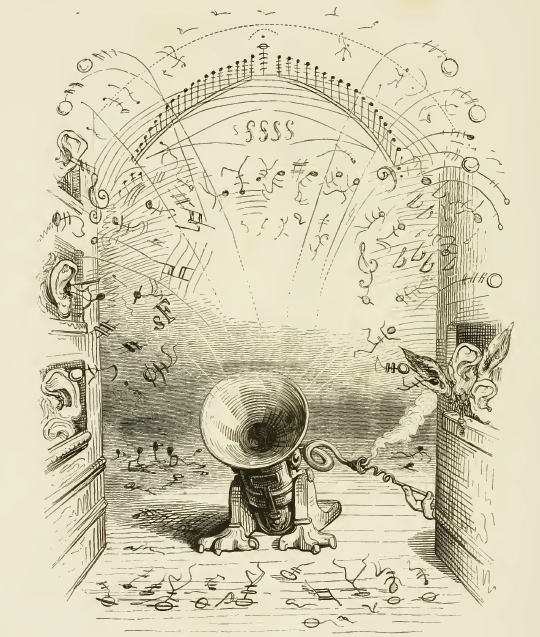
1846—Paris, France: A caricature by J.J. Grandville depicts Berlioz conducting a monstrous orchestra that includes a giant ophicleide (see below image; public domain) (source: wikimedia commons). The original version of the image, published in a Paris newspaper in 1845, was black and white and did not include the large ophicleide on the top-right. The version below was published in Louis Reybaud’s novel, Jérome Paturot a la recherche d’une position sociale, with a caption reading, “Fortunately the hall is solid…it can handle the strain.”
c. 1850—Paris, France: A humorous lithograph by artist Charles Edouard de Beaumont, printed by Aubert, shows a somewhat shabby-looking man with a serpent approaching two women. The caption beneath indicates one of the women saying “Clarisse, beware…the serpent!” (see below image; public domain) (source: Museum of Musical Instruments).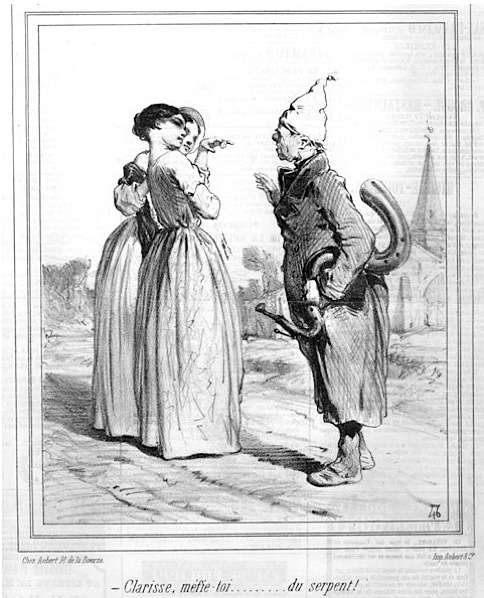
1876—Paris, France: Université illustrée publishes Chantres au lutrin, a print by Henri Brispot depicting a serpent with voices (see below image; public domain) (October 1876; source: Museum of Musical Instruments).
1906—A postcard by R. F. Outcault from Buster Brown Series No. 1000 depicts a young ophicleide player (see below image; public domain) (source: Serpent Newsletter, September 2011 [black and white version]).